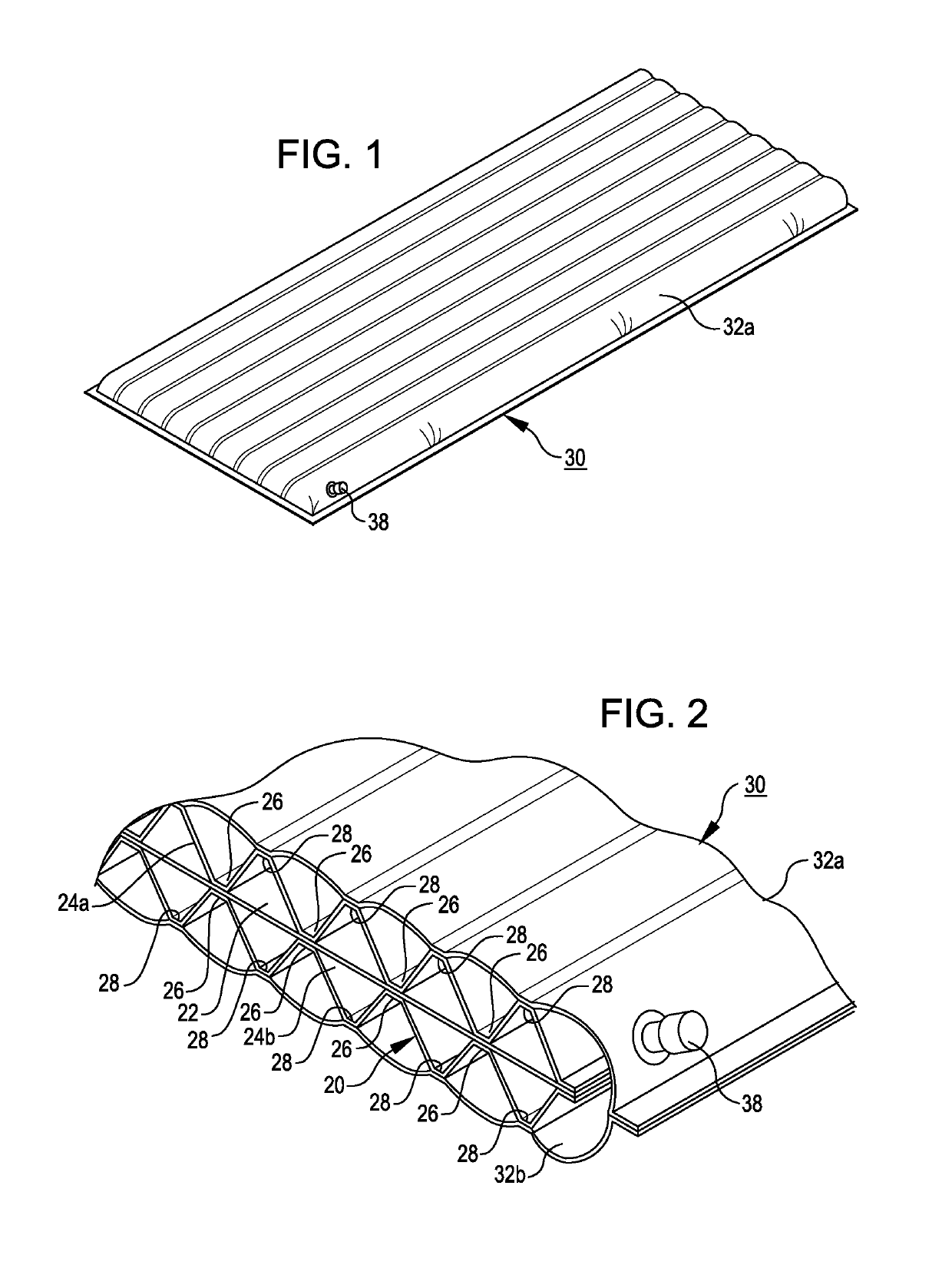Cellular matrix with integrated radiant and/or convection barriers particularly for use with inflatable bodies
a cellular matrix and barrier technology, applied in the field of new film-based cellular matrix, can solve the problems of virtually unchecked heat or thermal transfer through such disclosed cores via convection and radiation modes, and no prior art discloses modifications to the cellular matrix itself in order to improve thermal performance, and achieves long (or “high”) service life, enhanced thermal performance, and reduced heat transfer through convection mode
- Summary
- Abstract
- Description
- Claims
- Application Information
AI Technical Summary
Benefits of technology
Problems solved by technology
Method used
Image
Examples
Embodiment Construction
[0027]Preface: The terminal end of any numeric lead line in the several drawings, when associated with any structure or process, reference or landmark described in this section, is intended to representatively identify and associate such structure or process, reference or landmark with respect to the written description of such object or process. It is not intended, nor should be inferred, to delimit or define per se boundaries of the referenced object or process, unless specifically stated as such or facially clear from the drawings and the context in which the term(s) is / are used. Unless specifically stated as such or facially clear from the several drawings and the context in which the term(s) is / are used, all words and visual aids should be given their common commercial and / or scientific meaning consistent with the context of the disclosure herein.
[0028]With the foregoing in mind, the following discussion is presented to enable a person skilled in the art to make and use the inv...
PUM
| Property | Measurement | Unit |
|---|---|---|
| flexible | aaaaa | aaaaa |
| thermal transfer resistance | aaaaa | aaaaa |
| restorative force | aaaaa | aaaaa |
Abstract
Description
Claims
Application Information
 Login to View More
Login to View More - R&D
- Intellectual Property
- Life Sciences
- Materials
- Tech Scout
- Unparalleled Data Quality
- Higher Quality Content
- 60% Fewer Hallucinations
Browse by: Latest US Patents, China's latest patents, Technical Efficacy Thesaurus, Application Domain, Technology Topic, Popular Technical Reports.
© 2025 PatSnap. All rights reserved.Legal|Privacy policy|Modern Slavery Act Transparency Statement|Sitemap|About US| Contact US: help@patsnap.com



